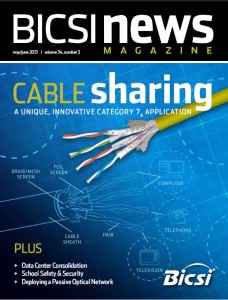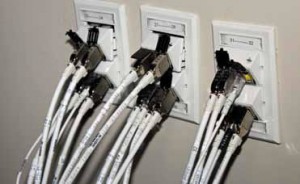75°C Rated Shielded Category 6A and 7A Solid Cables from Siemon

We are pleased to announce that all Siemon solid shielded category 6A and 7A cables sold worldwide are qualified for mechanical reliability in high temperature environments up to 75° C.
- This is one of the many benefits of Siemon shielded cabling – learn more in the Shielded Copper Cabling Learning Center.
This higher temperature rating is especially critical for support of the IEEE 802.3 PoE Plus (Type 2) application that exhibit a temperature rise within bundled cable configurations. For cabling infrastructure expected to support power delivery to data terminal equipment, the practice recommended by industry standards is to not install 60° C rated cables in environments above 50° C. Siemon shielded category 6A and 7A cables may be installed in environments up to the maximum 60° C specified by TIA and ISO/IEC standards and will not experience mechanical degradation caused by heat build-up inside the cable bundle due to PoE remote power delivery.
For more information on making PoE Plus-ready cabling choices to support reduced current-induced temperature rise and minimize the risk of degraded physical and electrical performance due to elevated temperature, see the white paper “IEEE 802.3at PoE Plus Operating Efficiency: How to Keep a Hot Application Running Cool.”
Furthermore, TIA and ISO/IEC cabling standards require overall channel length to be reduced from 100 meters (i.e. “length de-rating”) to offset additional insertion loss resulting from installation in environments having an ambient temperature greater than 20°C. Siemon’s shielded category 6A cables require less than half the length de-rating of category 6A UTP cables and Siemon’s fully-shielded category 7A cables do not require any length de-rating to support 10GBASE-T and lower speed applications in environments up to 60° C.
The associated part numbers are listed below by region. Any cables manufactured after June 15th will now include the marking ‘75C’ on the jacket legend:
| GLOBAL Part Numbers | Description |
| 9A6(X)4-A5, -5CR, -1KR | INTERNATIONAL, 6A F/UTP, SHIELDED LSOH, CM, CMR |
| 9N6(X)4-A5-R(X)N | INTERNATIONAL, 6A F/FTP, SHIELDED LSOH |
| 9T7L4-E10, -5CR, -1KR | INTERNATIONAL, 7A S/FTP, SHIELDED LSOH, 1000 MHz |
| 9T7L4-E12, -5CR, -1KR | INTERNATIONAL, 7A S/FTP, SHIELDED LSOH, 1200 MHz |
| US Part Numbers | Description |
| 9A6(X)4-A5-(XX)-R1(X) | 6A F/UTP, SHIELDED CMP, CMR |
| 9T7(X)4-E10-(XX)-R1 | 7A S/FTP, SHIELDED CMP, CMR |
Learn more about on Siemon shielded cable in the Siemon e-catalog.


